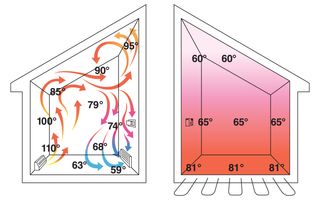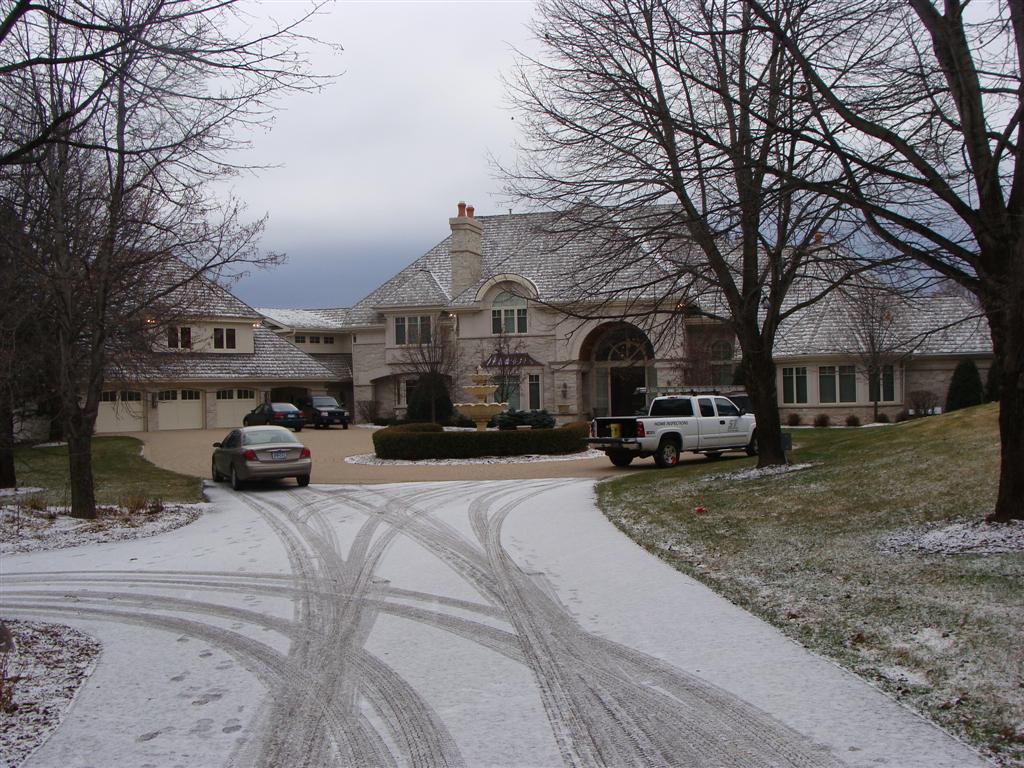Whenever I get around to building my dream home and money is no object, I won’t be using a furnace for heat. I’ll be using a boiler. Gas fired forced air furnaces are the standard for homes in Minnesota, but boilers have definite advantages over furnaces, with comfort and silence being the two biggest.
Boilers provide hydronic radiant heat by heating water that is circulated through copper or PEX tubing. The tubing can be fed through large old radiators, modern baseboard heaters, or hidden in walls, ceilings, or floors. Wall and ceiling heat is rare – I’ve only inspected two homes with in-wall or in-ceiling heat, and there wasn’t much I could look at. It took me a while to figure out how these systems worked! In-floor heat is the best. The most common way of installing in-floor heat is by laying PEX tubing on the floor and pouring concrete over it. If you’re not a fan of shoveling snow, you can even run the tubing under your driveway and walkways.
The photo below shows a home we inspected that had a partially heated driveway – it’s easy to tell where the heat begins.
 Boilers provide more comfortable heat than furnaces because the heat is even – especially if it’s installed in the floor. Floor heat allows everything in the room to be warm, including your toes. Even if a home is heated with baseboard heaters, the heat is more comfortable than forced air. Radiant heat is a much more comfortable heat than forced air.
Boilers provide more comfortable heat than furnaces because the heat is even – especially if it’s installed in the floor. Floor heat allows everything in the room to be warm, including your toes. Even if a home is heated with baseboard heaters, the heat is more comfortable than forced air. Radiant heat is a much more comfortable heat than forced air.
The other big advantage that boilers have over furnaces is that they’re silent. While newer homes with properly designed furnaces can have variable speed blower motors that cut down on noise, boilers are always silent. If I inspect a home with a boiler and I hear gurgling or bubbling in the pipes, I know there’s a problem with the system and I tell my clients to have it fixed. It’s usually a matter of air in the lines.
A couple other advantages worth noting are cleanliness and zone control. Because boilers don’t blow air (and dust, and alergens…) all over the house, you’ll have less alergens in the air, you’ll never need to hire someone to clean your ducts, and you won’t need to worry about your two-year-old putting Cherios in the vents. Boilers are also much easier to conrol by zone – most forced air systems don’t have zone controls, and the ones that do typically don’t have more that two zones. I’ve never seen more than three.
If boilers are so great, why aren’t they the standard? No one wants to spend the money. Boilers cost much more than furnaces and they don’t provide a way of cooling a home. To cool a home with hydronic radiant heat, a completely separate forced air system needs to be installed, which dramatically adds to the installation costs. In older homes without ductwork installed for a furnace, it’s an expensive project to add central air.
Reuben Saltzman, Structure Tech Home Inspections – Email – Home Inspections Saint Paul

